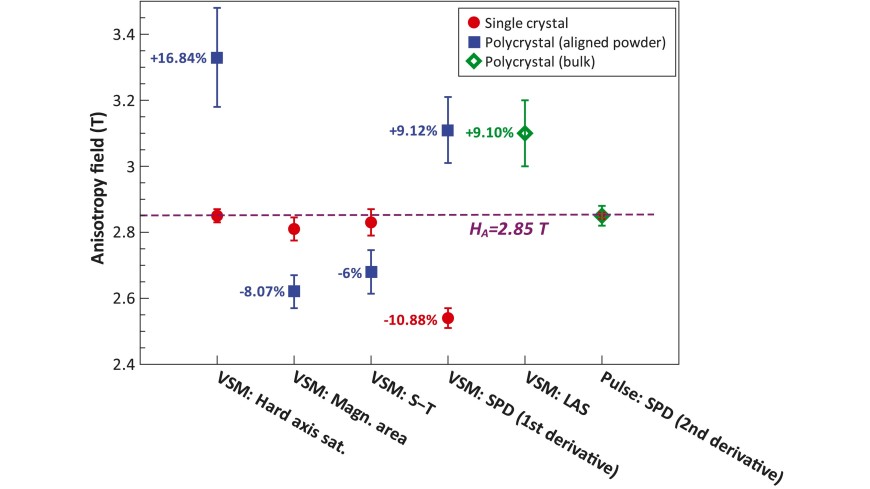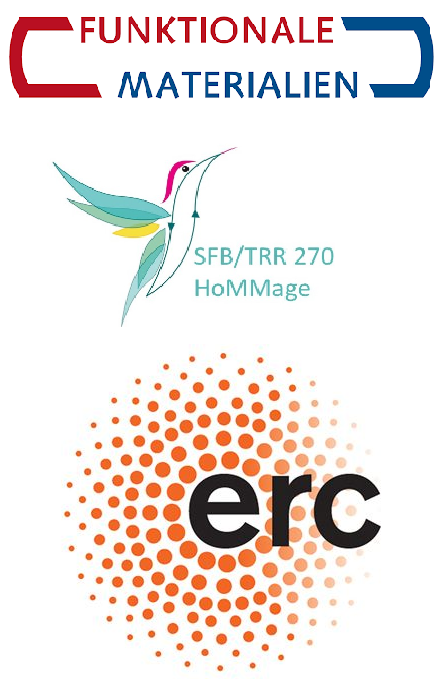Determining the anisotropy field of permanent magnets: A comparison of current methodologies
New publication
2025/10/15

With the exponential rise of data-driven materials research strategies, datasets play a crucial role in developing models and predicting material properties. However, machine learning requires accurate datasets and well-defined descriptors to ensure reliable predictions. In the field of energy applications, the demand for high-performance and sustainable permanent magnets is growing, and machine learning has the potential to accelerate the discovery of new compounds. One of the key criteria for achieving hard magnetic properties is the magnetocrystalline anisotropy field (Ha). Ideally, and if available, Ha is determined using single crystals of a defined shape. However, growing phase-pure single crystals is not always feasible for certain hard magnetic compounds due to phase stability challenges.
In this study, we compare and evaluate the most commonly used methodologies for estimating the anisotropy field using Ce2Fe14B as a case study. Specifically, we compare different methods – including hard-axis saturation, magnetization area, Sucksmith–Thompson, the law of approach to saturation, and singular point detection – applied to single crystals, aligned polycrystals, and isotropic polycrystals. These findings are particularly relevant for materials scientists seeking to use reliable descriptors in machine learning datasets and to accurately estimate the anisotropy field to accelerate new hard magnet discovery.
A. Aubert, K. Skokov, O. Gutfleisch
JMMM 634, 173566 (2025).
DOI: 10.1016/j.jmmm.2025.173566



